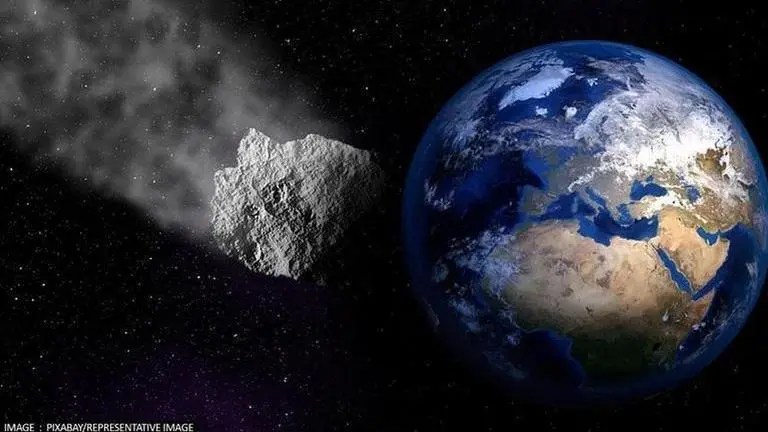Updated 28 November 2021 at 11:15 IST
Massive asteroid, stronger than nuke, expected to fly by Earth on December 27: Reports
The huge asteroid known as 2018 AH, has an estimating diameter between 84 and 190 meters and is considered roughly equivalent to the Tunguska asteroid.
- Science News
- 2 min read

A gigantic sized asteroid. considered to be stronger than a nuclear bomb, is heading towards the Earth by late December, as per the National Aeronautics and Space Administration's (NASA) asteroid tracker. The cosmic body's diameter is estimated to be between 84 and 190 meters, and researchers believe that it would be roughly equivalent to the Tunguska asteroid, which had caused a 12-megatonne explosion in 1908. The asteroid is expected to fly by Earth on December 27 at a distance of over 4.5 million kilometres, The Jerusalem Post reported.
The asteroid, known as 2018 AH, has had a previous encounter with the planet. The asteroid passed Earth in 2018 at a distance of 296,758 kilometres, almost three-quarters of the distance between the Earth and the Moon, but as it does not have its own light, went overlooked in spite of its enormous size, Sputnik reported.
Asteroid falls in 'hazardous' Apollo category
According to NASA, 2018 AH is a near-Earth object. The cosmic body has been classified as being in the Apollo category, which is the most hazardous. The orbits of the Apollo asteroids that cross Earth pose a collision risk. The space agency, on the other hand, believes it is improbable that this celestial body would hit Earth.
However, if the asteroid changes its course, then it has a probability of collision, and if it collides with the earth, the result will be devastating. In comparison, a 17-meter meteor that crashed in the atmosphere above Russia's Chelyabinsk Region in 2013 caused $33 million in damages to nearly 7,000 structures, Sputnik reported.
Advertisement
Furthermore, since the approach of 2002 JE9 in 1971, 2018 AH will be the biggest known asteroid to travel so near to the earth. According to researchers, the roughly kilometre-long asteroid 2001 WN5 will travel past the Earth in 2028. It will be the next encounter with such a giant.
Meanwhile, deflection, which entails launching anything to gently modify an asteroid's trajectory, is one strategy for perhaps preventing an asteroid's collision. The Double Asteroid Redirection Test (DART) Mission, which is presently ongoing as a consequence of NASA and the Applied Physics Laboratory's work, is the most visible of these initiatives. NASA initiated the 'DART mission,' a nearly one-year trip to collide with an asteroid, on November 24.
Advertisement
(Image: Pixabay/Representative)
Published By : Anwesha Majumdar
Published On: 28 November 2021 at 11:15 IST
